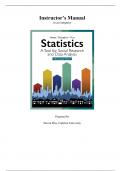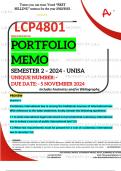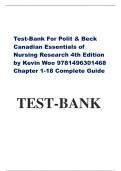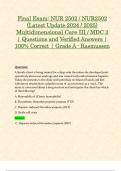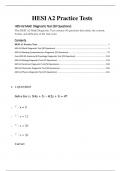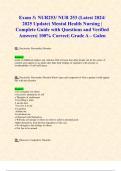Tentamen (uitwerkingen)
STATISTICS A TOOL FOR SOCIAL RESEARCH AND DATA ANALYSIS, 5TH EDITION JOSEPH F. HEALEY CHRISTOPHER DONOGHUE STEVEN PRUS INSTRUCTOR SOLUTION MANUAL
- Vak
- Instelling
- Boek
STATISTICS A TOOL FOR SOCIAL RESEARCH AND DATA ANALYSIS, 5TH EDITION JOSEPH F. HEALEY CHRISTOPHER DONOGHUE STEVEN PRUS INSTRUCTOR SOLUTION MANUAL
[Meer zien]
